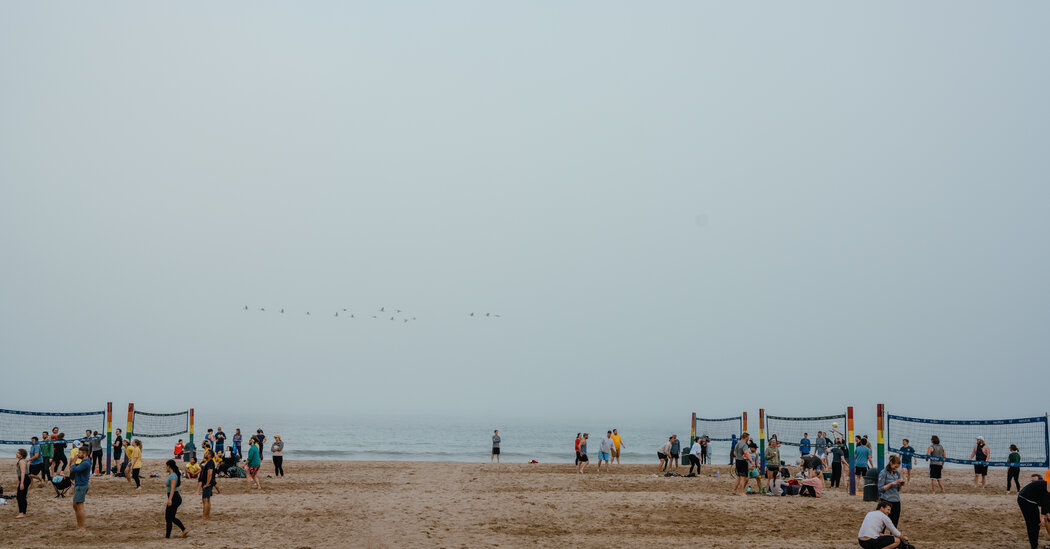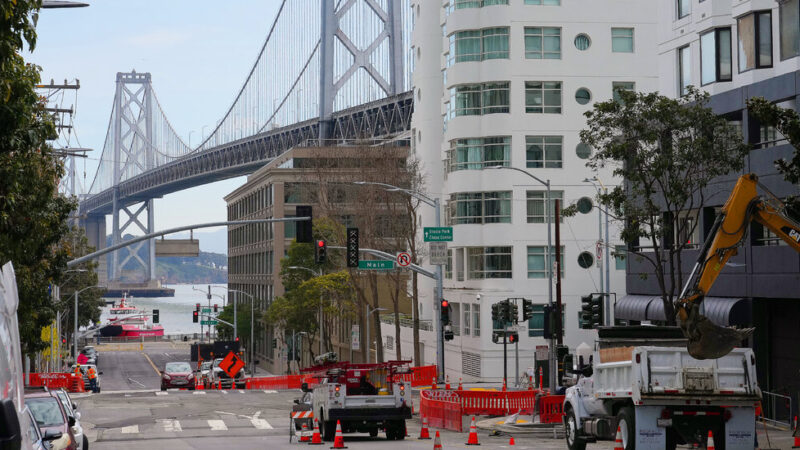Why Lifeguards Are Scarce This Beach Season

[ad_1]
MILWAUKEE — On the first week of June in Wisconsin, beachgoers on a neatly groomed Lake Michigan shore strolled past volleyball nets on rainbow-striped poles and a waterfront cafe menu offering bratwurst, quesadillas and mojitos.
Only one thing was missing. Instead of traditional wooden lifeguard stands, there was a cherry-red life preserver and a sign: “No lifeguard on duty. Swim at your own risk.”
Lifeguards are frustratingly scarce this year, leaving tens of thousands of the nation’s pools closed and beaches unguarded, and the public distanced from a stalwart of the American summer.
In Milwaukee County, where temperatures have already reached into the 80s and schoolchildren have wrapped up the academic year, a network of public pools is more closed than open. At least five facilities have been shuttered, and four pools will be open to the public, officials said. At popular beaches on Lake Michigan, swimmers must navigate crashing waves and dangerous riptides on their own.
The hiring woes stretch across the country: Officials in Austin, Texas, said they have yet to find willing lifeguards for half of the 750 positions they hope to fill. In Cincinnati, hiring fell so short that only eight of the city’s 23 pools could open.
“It feels like a problem that is unsolvable,” said Jim Tarantino, the deputy director of Milwaukee County Parks, which manages the city’s pools, said of the closures. “We’re as devastated as the community is.”
City officials and industry experts point to a crush of factors driving the lifeguard shortage. A low unemployment rate has given young people plentiful job options. Because of Covid-related limits during the pandemic, swimming lessons and lifeguard courses were often suspended for parts of the last two years, poking holes in an already weak training pipeline. And employers are choosing from a smaller group of applicants: In states like Wisconsin, there are simply fewer teenagers than in decades past, as residents have increasingly chosen to have smaller families.
“It’s the worst we’ve ever seen it,” said Bernard J. Fisher II, director of health and safety at the American Lifeguard Association, who added that one-third of the nation’s beaches and pools are affected by the shortage.
Even for pools that are staying open, many are canceling swim lessons and assigning their instructors to work as lifeguards, complicating the training issue in the future. “If we don’t keep training new lifeguards all summer, it’s going to be a long time before we get out of this,” Mr. Fisher said.
Desperate for help, cities and private employers have dangled perks and raised hourly wages. Six Flags St. Louis has offered up to $18 an hour to lifeguards and promised a $500 bonus. In Grand Rapids, Mich., the parks department covered the cost of lifeguard training this year, helping to attract enough applicants to staff its pools.
In New Orleans, known for its sweltering, humid summers, lifeguards are paid $15.91 an hour, a jump from just under $12 an hour last year, said Larry Barabino Jr., the chief executive of New Orleans Recreation Development Commission, the organization that runs the city’s parks and pools.
“We’ve been on the news, we’ve been on social media, we’ve been on the radio,” Mr. Barabino said.
But it has not worked. Only five of the city’s 13 seasonal pools will be open this summer. And Mr. Barabino worries that teenagers will have fewer options for recreation, especially when their families cannot afford pricey private camps and vacations.
“The challenge for some youth is, will the ability to walk to their neighborhood swimming pool be there?” he said. “And the answer is no. They won’t have the ability to swim every day.”
The network of public pools in Austin is slowly revving back to life as hiring is increasing, and Aaron Levine, an aquatics supervisor, says he hopes the department will do better than last year in reaching its goals. But he worries that the national lifeguard shortage will have implications for swimmer safety, especially for children who are not proficient in the water.
“It’s hard to watch,” he said. “It’s 100 degrees in Texas. If they don’t come to their lifeguarded neighborhood pool, they will find a body of water somewhere.”
Many unused pools across the country are showing signs of deterioration, with weeds springing up in cracks in the concrete. The Washington Park pool in Milwaukee is one of them, its mint-green diving boards hovering over an empty pool, and a low-slung building next door locked and shuttered.
Mike Ithier, who lives a few blocks away, sat on his front porch on a recent afternoon and lamented that the local pool — surrounded by a chain-link fence, drained of water — was unavailable to children in the neighborhood.
He has lived in the city for decades, and remembers his own days as a teenager in the 1970s: When he was 14, he got a job as a lifeguard at that very pool.
“It was beautiful then,” he said. “You rode your bike there, checked your bike — they watched it for you — and paid 25 cents to go swimming.”
A short drive away at Bradford Beach on Lake Michigan, where the sign warned visitors there would be no lifeguards on duty, some Milwaukeeans said that the absence felt like a loss for a beloved ritual.
Tyesha Shareef, 29, was at the beach during a break from her work in real estate, having a quiet moment watching the water from her car. She has fond memories of coming to the beach as a child, she said, when lifeguards were plentiful and the crowds were bigger.
“I remember it being so great then,” she said, adding that though her 2-year-old daughter could swim, she would not want to bring her to the water without a lifeguard, knowing how quickly a child can escape even the most watchful parent.
“I just don’t think it’s safe,” Ms. Shareef said. “It’s not the same.”
[ad_2]




